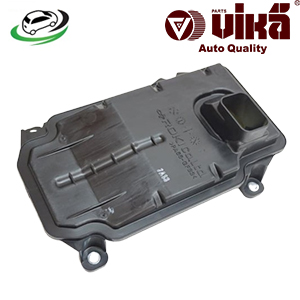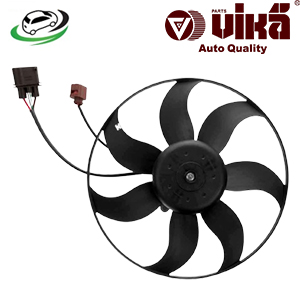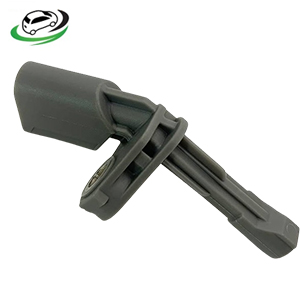-2%
Get Electronic Rear Left ABS Wheel Speed Sensor Audi Q3 / VW CC/Eos/Golf Cabriolet/Beetle Cabrio/Magotan/Jetta/Passat CC/Scirocco/Tiguan 1K0927807A
The ABS (Anti-lock Braking System) wheel speed sensor is a critical component in modern vehicles, playing a crucial role in maintaining vehicle stability and safety during braking. This detailed overview will explore the design, function, importance, types, common issues, and maintenance of the ABS wheel speed sensor.
Design and Function
Design:
- Construction:
- Sensor Types: ABS wheel speed sensors are typically either inductive (passive) or Hall-effect (active) sensors. The design of these sensors varies slightly based on their type, but they generally consist of a sensor body, a sensing element, and a connector.
- Inductive Sensors: These sensors use a coil and a magnet to generate an electrical signal. They rely on a rotating toothed ring (reluctor ring) attached to the wheel hub. As the ring rotates, it induces a voltage in the sensor’s coil, which is then sent to the ABS control module.
- Hall-effect Sensors: These sensors use a magnetic field and a semiconductor to generate a digital signal. A magnetized toothed ring or a rotating magnet interacts with the sensor to produce a varying electrical signal corresponding to the wheel’s speed.
- Placement:
- Location: The ABS wheel speed sensor is typically mounted on the wheel hub or the brake caliper, near the wheel bearing assembly. Its placement allows it to monitor the rotational speed of the wheel.
Functionality:
- Speed Measurement:
- Signal Generation: The sensor generates an electrical signal corresponding to the rotational speed of the wheel. For inductive sensors, this is an analog signal, while Hall-effect sensors produce a digital signal.
- Data Transmission: The signal is transmitted to the ABS control module, which processes the data to determine the speed of each wheel.
- ABS Operation:
- Brake Modulation: The ABS control module uses the wheel speed data to monitor for any wheel that is decelerating too quickly during braking, indicating potential wheel lockup. If lockup is detected, the module adjusts the brake pressure to that wheel to prevent skidding and maintain vehicle stability.
- Stability Control:
- Traction Control: In addition to ABS, the wheel speed sensor data is used by traction control systems (TCS) and electronic stability control (ESC) to improve vehicle handling and stability in various driving conditions.
Importance of the ABS Wheel Speed Sensor
- Safety Enhancement:
- Preventing Skidding: The ABS wheel speed sensor plays a crucial role in preventing wheel lockup during hard braking, which helps maintain steering control and reduces the risk of skidding.
- Improving Braking Performance: By preventing wheel lockup, the ABS system allows for more effective braking performance and shorter stopping distances on slippery surfaces.
- Vehicle Stability:
- Handling: The data from the ABS wheel speed sensor is essential for stability control systems that help maintain vehicle stability during sudden maneuvers or adverse road conditions.
- Traction Control: The sensor also aids in traction control, preventing wheel spin and improving traction on slippery surfaces.
- Enhanced Driver Confidence:
- Predictable Braking: The ABS system provides more predictable braking performance, which increases driver confidence, especially in emergency situations or on slippery roads.
Types of ABS Wheel Speed Sensors
- Inductive (Passive) Sensors:
- Design: Inductive sensors consist of a coil and magnet that generate an electrical signal in response to changes in the magnetic field caused by the rotating toothed ring.
- Characteristics: These sensors are simple and robust, but they produce an analog signal that requires additional processing by the ABS control module.
- Hall-effect (Active) Sensors:
- Design: Hall-effect sensors use a magnetic field and semiconductor to produce a digital signal. The rotating magnet or toothed ring interacts with the sensor to generate a varying electrical signal.
- Characteristics: Hall-effect sensors are more accurate and provide a digital signal that is easier for the ABS control module to process. They are generally more sensitive and can provide more precise wheel speed data.
Common Issues with ABS Wheel Speed Sensors
- Sensor Failure:
- Causes: Sensor failure can result from physical damage, electrical issues, or contamination. Physical damage can occur from road debris or improper handling during maintenance.
- Signs: Symptoms of sensor failure include the ABS warning light on the dashboard, erratic braking performance, or a noticeable loss of traction control.
- Signal Interruption:
- Causes: Signal interruption can occur due to wiring issues, connector problems, or a damaged reluctor ring. Dirt or debris on the sensor or reluctor ring can also affect signal accuracy.
- Signs: Intermittent or inconsistent ABS operation, warning lights, or error codes related to the ABS system may indicate signal interruption.
- Contamination:
- Causes: Contamination from road salt, dirt, or brake dust can affect sensor performance. Contaminants can interfere with the sensor’s ability to generate accurate signals.
- Signs: Contaminated sensors may lead to erratic ABS behavior, inconsistent braking performance, or warning lights.
- Reluctor Ring Issues:
- Causes: The reluctor ring, which is used by inductive sensors, can become damaged or misaligned. This can lead to incorrect signal generation and ABS system malfunctions.
- Signs: Symptoms include unusual braking behavior, ABS warning lights, or noise from the wheel hub area.
Maintenance and Inspection
- Regular Inspections:
- Check Sensor Condition: Inspect the ABS wheel speed sensors regularly for signs of physical damage or contamination. Look for cracks, loose connections, or debris accumulation.
- Inspect Wiring and Connectors: Ensure that the sensor wiring and connectors are secure and free from damage. Address any issues promptly to prevent sensor malfunction.
- Cleaning:
- Remove Contaminants: Clean the sensor and reluctor ring area to remove any dirt, debris, or brake dust that may affect sensor performance. Use appropriate cleaning methods and avoid using harsh chemicals that could damage the sensor.
- Testing:
- Diagnostic Tools: Use diagnostic tools to check the sensor’s performance and signal output. Scan for any ABS-related error codes and perform tests to ensure the sensor is functioning correctly.
- Check Signal Accuracy: Verify that the sensor is providing accurate signals to the ABS control module. Compare the sensor data with the expected values for proper operation.
- Replacement:
- Follow Manufacturer’s Recommendations: Replace the ABS wheel speed sensor according to the manufacturer’s recommendations or when signs of failure are observed.
- Use Quality Parts: When replacing the sensor, use high-quality parts that meet or exceed the manufacturer’s specifications. Proper installation is crucial for optimal performance.
Replacing the ABS Wheel Speed Sensor
- Preparation:
- Gather Tools and Parts: You’ll need a new ABS wheel speed sensor, basic hand tools, and any required cleaning materials.
- Consult the Manual: Refer to the vehicle’s service manual for specific instructions and specifications related to sensor replacement.
- Remove the Old Sensor:
- Locate the Sensor: Find the ABS wheel speed sensor, typically mounted on the wheel hub or brake caliper.
- Disconnect Wiring: Disconnect the electrical connector from the sensor.
- Remove the Sensor: Remove the mounting bolts or screws securing the sensor and carefully pull it out of its position.
- Install the New Sensor:
- Position the New Sensor: Insert the new sensor into the mounting position, ensuring it aligns correctly with the reluctor ring or magnet.
- Secure the Sensor: Reinstall the mounting bolts or screws and tighten them to the manufacturer’s specifications.
- Reconnect Wiring:
- Connect Electrical Connector: Reconnect the electrical connector to the new sensor, ensuring it is securely attached.
- Test the System:
- Check Operation: Start the vehicle and test the ABS system to ensure proper operation. Check for any warning lights or error codes and verify that the braking performance is normal.
Follow us on Facebook for more parts.



